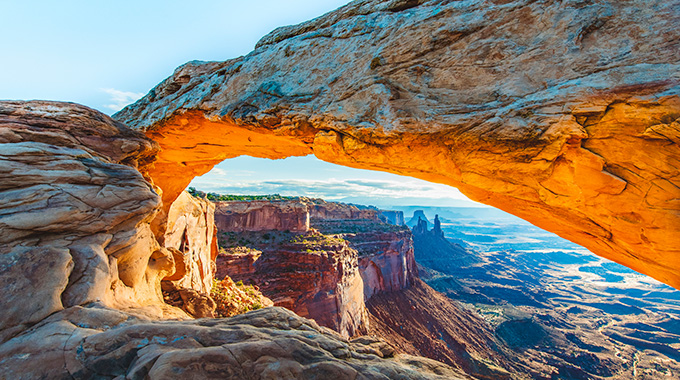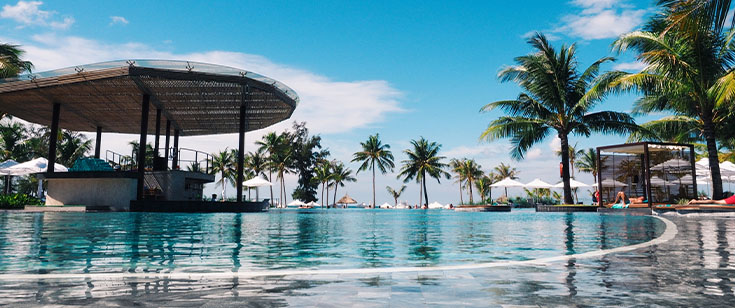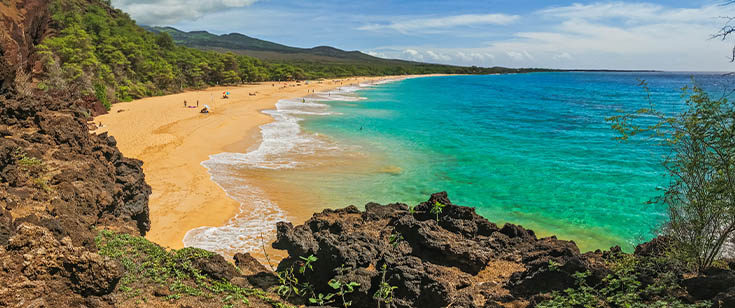There’s myriad other rock forms, too, from the gravity-defying Balanced Rock to the hoodoos known as the Three Gossips. The most distinctive experience is likely the Fiery Furnace. As the name suggests, hiking this labyrinth of rocks isn’t for the faint of heart—since it’s easy to get lost, visitors must either join a ranger-guided tour or get a permit ahead of time to hike on their own. But for those willing and able to do some scrambling and climbing, no other hike immerses you so thoroughly in the red rocks.
Keep in mind: If you’re not looking to hike or have mobility issues, bear in mind that some of Arches’ most iconic sights can’t be seen from the road, including Delicate Arch and Landscape Arch. Some trails are accessible while others are not; the National Park Service describes each trail’s accessibility on its website.
Like Zion, Arches typically gets very hot in summer, with 100-degree days common in July and August. Unlike Zion, you can drive your own vehicle into and around Arches. From April to October, though, if you want to enter the park during the peak time of 7 a.m.-4 p.m., you’ll need a timed reservation through Recreation.gov.
If you find yourself without a reservation and having to wait, nearby Canyonlands National Park doesn’t need reservations and is a great place to visit in the meantime.















.png)




